The New York metropolis, also known as the Big Apple, is the epitome of the United States and much of what the United States stands for in diversity, opportunities and freedom. It is an international metropolis that attracts tourists from all over the world all year round, and there is always something exciting to see and do in this, the largest American city.
Upon entering the city the Statue of Liberty stands as a symbol of the land of the free and the American dream, which has always been popular among immigrants and tourists alike. The statue goddess overlooks Manhattan’s mix of the many classic and modern skyscrapers, bridges, rivers and many other sights and features.
It was in New York and Chicago, the world’s first and tallest classic high-rise buildings were built, and it happened fast and ever higher through the 20th century. Among the most famous skyscrapers, you can see the Chrysler Building and the Empire State Building from the peak of skyscraper designs on the first part of the 1900s. One World Trade Center is the tallest and the most famous modern high-rise in the city.
New York is also synonymous with shopping malls and great food. Walk the elegant Fifth Avenue or the world’s largest department store, Macy’s, and enjoy the cityscape with cafes and restaurants from all over the world. It is never far to another good cafe or place to eat in the various ethnic neighborhoods.
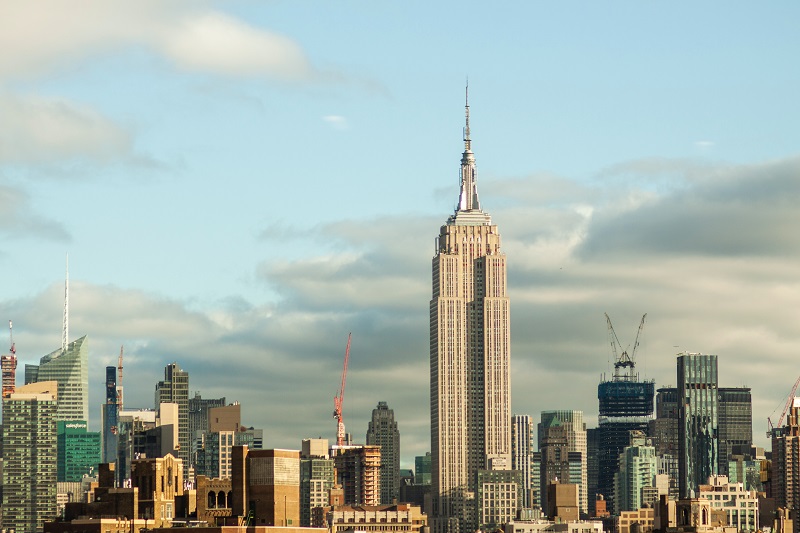
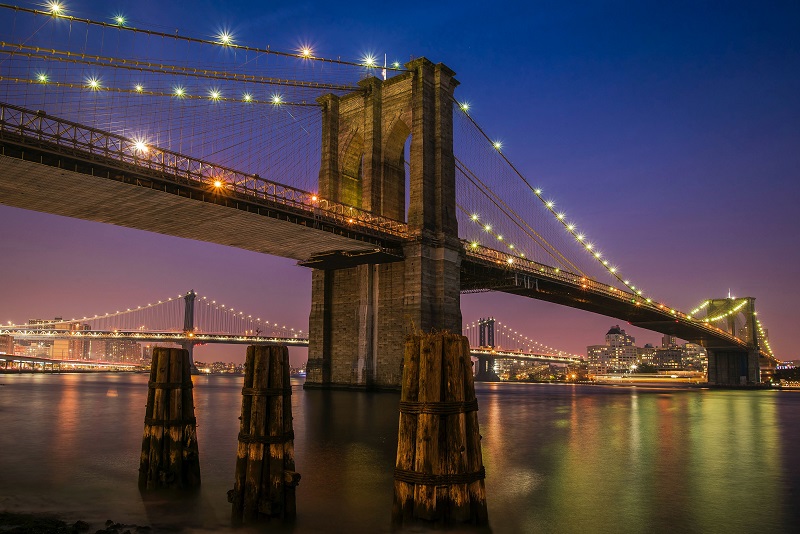
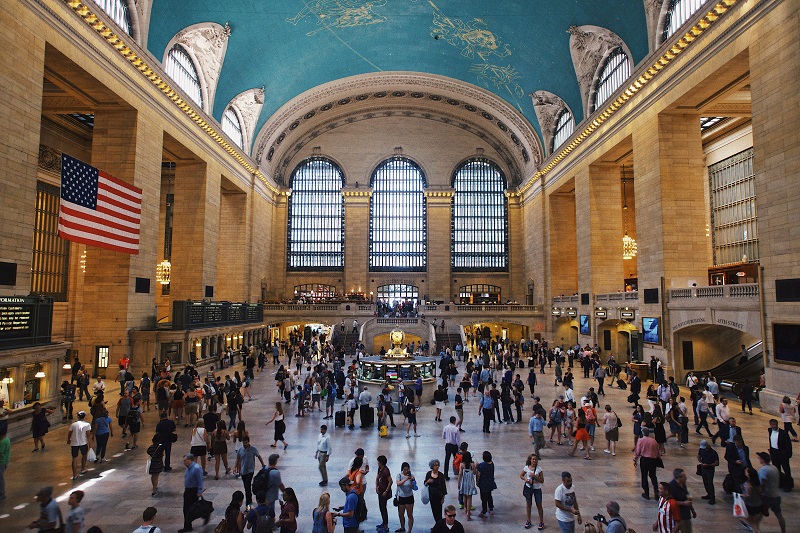
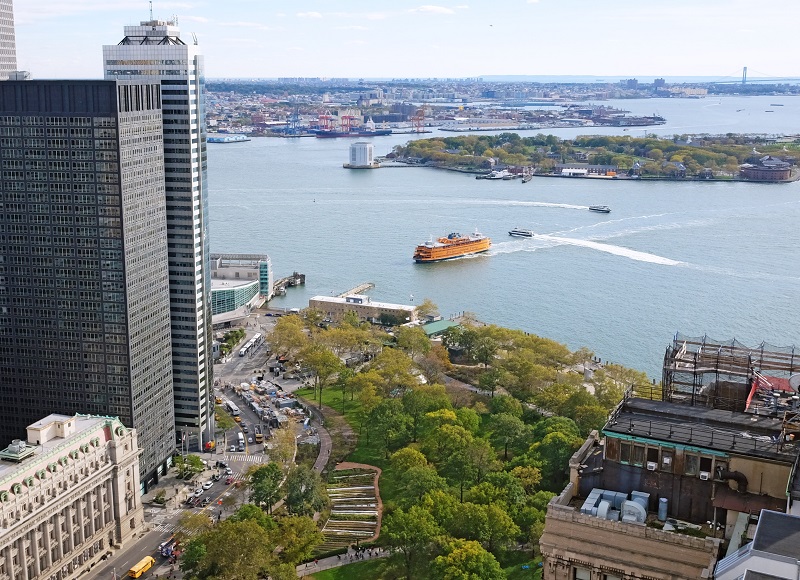
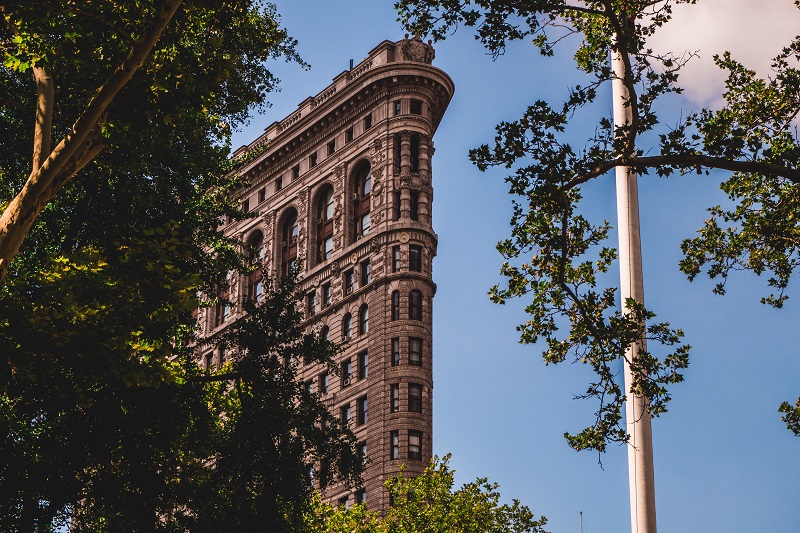
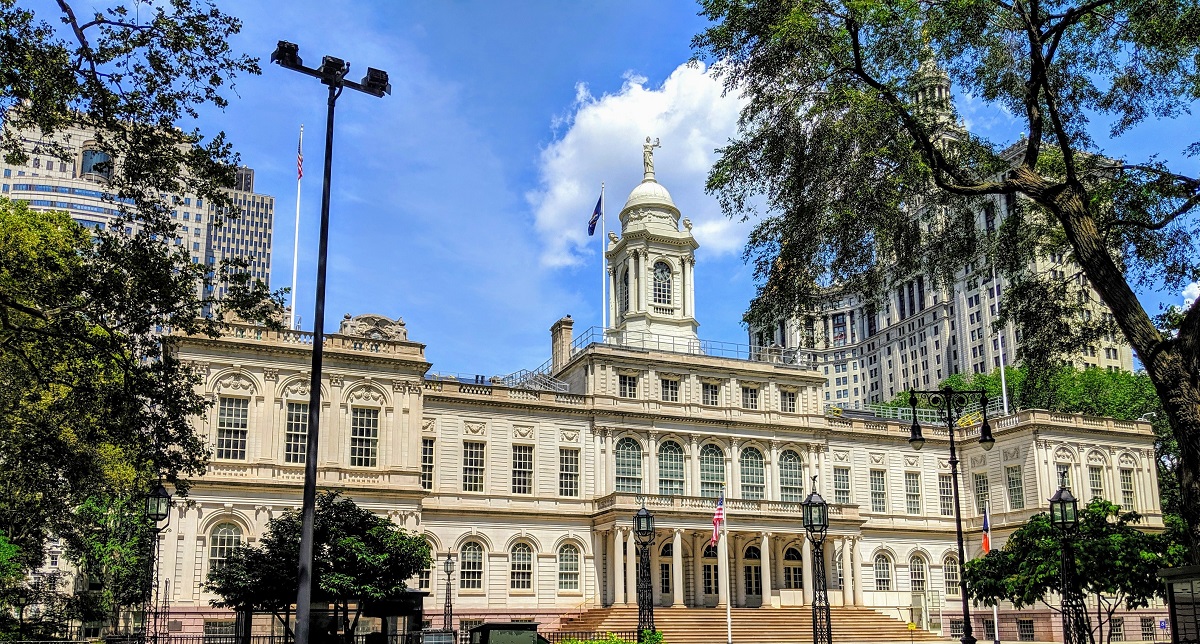
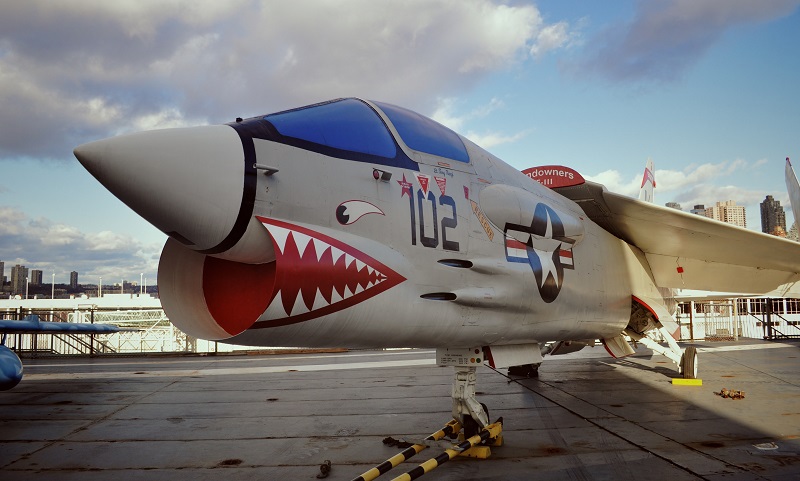
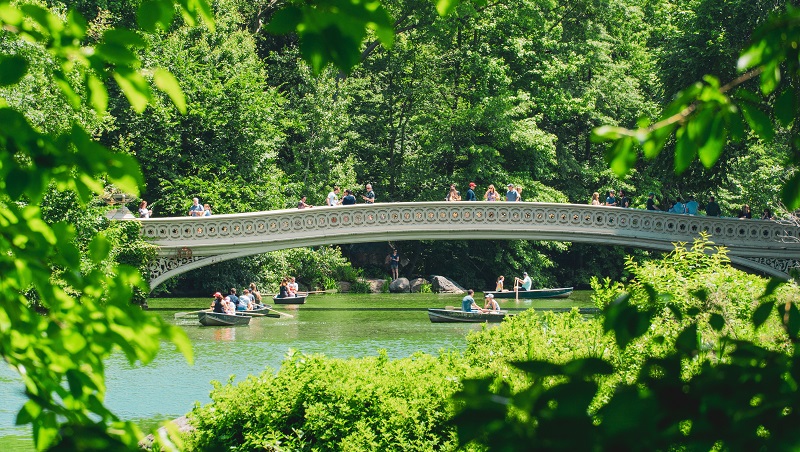
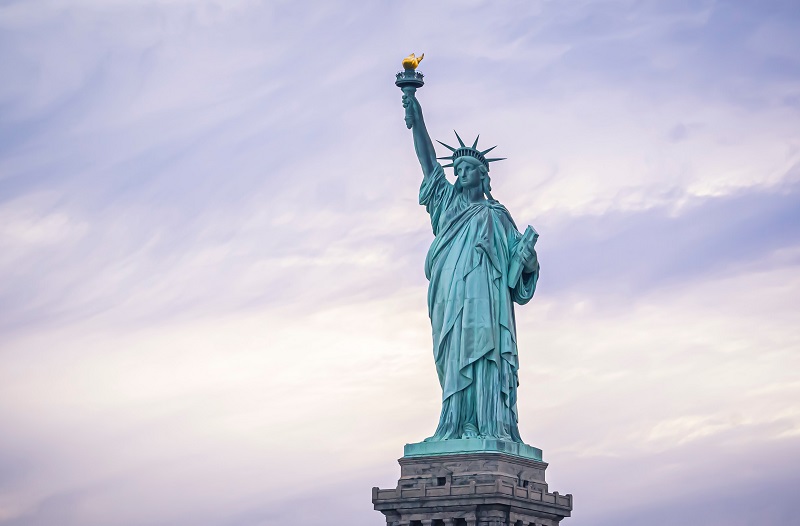
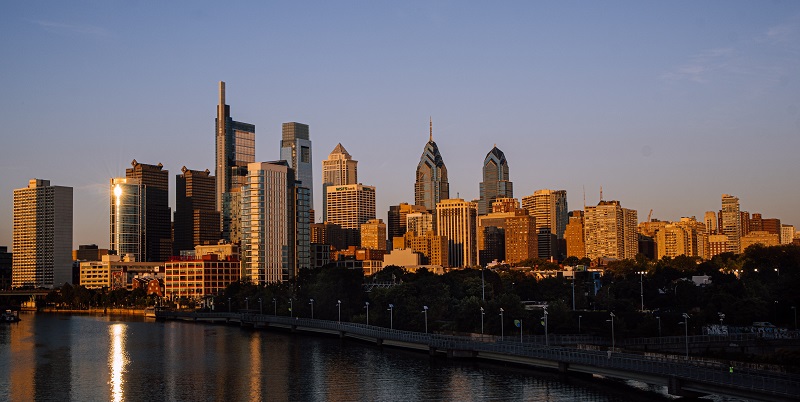
European history begins
New York’s settled history begins with the first European to come to the interior of present-day New York. It was the Italian Giovanni da Verrazzano, and it happened in 1524. However, a settlement was not established on this occasion, as Verrazzano sailed on after, among other things, a meeting with the Lenape tribe who lived in the area.
Verrazzano later gave the first urban area the first European name; Nouvelle-Angoulême. It was in honor of the French king, who besides the royal title was the Count of Angoulême.
Hudson’s Settlement
In September 1609, the Dutch ship Halve Maen entered in what is today the port of New York. Captain was the Englishman Henry Hudson, who was in Dutch service to find a sea route west to Asia. They did not find the sought after route, but they noted a large population of beavers.
Beaver fur was the highest fashion in Europe, and with the beavers of the coastal country, there was a source of income that could be exploited by the Dutch. They built trading stations in the New World, and the value and significance of the beavers can be seen to this day in New York’s city arms.
The Dutch colonies were founded, and among them was a fur trading station at today’s Albany. In connection with it, the area around present-day Manhattan was strategically good with ice-free shipping of furs.
In 1624 the first Dutch came to the new colony, which lay on the Noten Eylandt; today’s Governors Island. The southern tip of Manhattan was also colonized and the colony was named Nieuw Amsterdam the same year. In 1625 Fort Amsterdam was established, and in 1625 Peter Minuit purchased Manhattan and Staten Island by the Algonquin Indians. It laid the foundation for the development of the site.
Trade and settlements were constantly expanded; among other things, by means of African slaves, who during the 1700s became a large part of the new population.
Among the more well-known Dutch, Petrus Stuyvesant, among others, came to the colony. It was in 1647, when he became its Director-General; a position he held until 1664. The Director General was appointed by the company Geoctroyeerde Westindische Compagnie, which was a West Indian trading company based in Amsterdam.
Stuyvesant came to characterize the city’s early growth history, expanding Nieuw Amsterdam to the north and thus beyond the original colony at the southern tip of Manhattan. Thus, a canal was built where Broad Street is today, a wall along Wall Street and Broadway itself.
Nieuw Amsterdam turns into New York
In 1664 British ships came to Nieuw Amsterdam and conquered the city, and formally Britain was assigned to the colony by the peace treaty in Breda, which in 1667 marked the end of the Second English-Dutch War. The city was renamed and now came to be called New York; named after the Duke of York.
A short transition, New York became Dutch again in 1673, but the final Dutch exit happened the year after the colony was swapped with Suriname in South America. New York then became a crown colony in 1685.
Towards Independence
Throughout the 18th century, the city was continuously expanded with construction of homes, churches, administrative buildings, harbor facilities, etc.
In the 1740s there lived about 10,000-15,000 including about 20% of African slaves. The population of the city increased significantly over the century, and by the first census that took place in 1790, 30,000 people lived here.
Of larger institutions that saw the light of day was the educational site of King’s College, named after British King Charles II, later named Columbia University.
Increasing activity was also evident in the busy port that secured New York a leading position in the upland and also in the war that was on the way.
In the 1760s, the British introduced additional taxation of the American colonies with The Stamp Act, and it led the period 7-25. October 1765 the The Stamp Act Congress, a meeting of representatives of several of the colonies. The meeting was held in New York and was the first major and coordinated protest with British rule.
United States Independence
In 1776, some North American colonies who wanted independence from England came to war. The Declaration of Independence itself had been adopted by the Continental Congress on July 4, 1776. With that declaration, 13 colonies in the present United States considered themselves independent and thus not part of the British Empire.
On August 27, 1776, the first real battle took place in the American War of Independence. General George Washington had defeated the British by a siege of Boston, and he went with his army to the strategically important port city, New York, to which the English could continually obtain supplies for the navy and the army sailed forward.
During the Battle of Long Island, the British won, which they repeated at the Battle of Fort Washington. New York was the British’s main bridgehead, and it was a loyal city to English rule.
Despite the defeat, with the end of the war, the United States became independent, and New York also became part of the country. British troops remained in the city until 1783, when George Washington came here at the same time as the British retreat of the last soldiers.
The new capital
War years had come at a distance, and the new country was to establish its own structures. In 1788, New York became the first capital of the United States, and in 1789 George Washington was inaugurated as the country’s first president at a ceremony in the Federal Hall on Wall Street. The first Supreme Court was also established here in the city, which was dominant in the US from the start. In 1790, however, the city’s status of capital passed to Philadelphia, and later Washington was established as a federal metropolitan area.
19th Century development
New York’s roots as a Dutch colony in the southern tip of Manhattan continued to be central to the city’s infrastructure, but large-scale growth and migration pushed for the city to expand significantly.
Thus, a visionary city plan from 1811 laid out all of northern Manhattan following a grid system for new urban areas, and the great immigration of the period created a great increase in population.
In 1819-1825, the city’s strategic position was strengthened with the construction of the Erie Canal waterway, which connected New York along the Hudson River and thus the city with the major agricultural areas of the Midwest and Canada. The new shipping route through Lake Erie, through the canal and to New York brought increased trade and growth.
The city was booming and people were moving to. In 1835, New York became the United States’ largest city with more than 150,000 inhabitants; thus Philadelphia had been overtaken in size.
In 1835, the old Dutch quarter burned to the ground, but the area was quickly redeveloped and there were virtually no limits to the growth of the city.
Large population groups joined; for example, many Irishmen who fled the famine in their homeland. New York’s share of Irish rose to a quarter in the mid-1850s, and new schools and other institutions were built for both them and other immigrants.
Civil War
During the American Civil War, the city sympathized with the north and the south. There were many good trade links and familial ties to the southern states, and in 1863 this led to great civil unrest. The retention of the American Union was muted and New York could continue its thriving development.
Late 19th Century
In the latter part of the 19th century, millions of European immigrants came to the United States, and most of them arrived through New York harbor. The first meeting with the United States was changed from 1886 with the erection of the Statue of Liberty, a gift from France on the occasion of the 100th anniversary of the United States.
New York’s area was expanded over several times up to 1900, and new neighborhoods like the Bronx were built. In 1898, Greater New York was created by the amalgamation of many municipalities, and the city’s population grew by that opportunity to 3.5 million. The large population and thriving economy created a great deal of pressure on Manhattan as the center, and building closer and higher. The first skyscrapers shot up, and the city’s subway opened in 1904.
Construction boom and stock market crash The
skyscrapers shot up, and Manhattan’s skyline changed with the many new buildings. Underground, the city’s first subway line opened in 1904, and over time the line network has expanded rapidly with the city counting more than 400 stations.
New York’s economic growth was slowed by the stock market crash of 1929, which began the 1930s depression. Time created endless queues of unemployed, poor New Yorkers. However, major construction projects such as the Empire State Building, inaugurated in 1931, were completed.
The post-war era to today
UN headquarters was located in New York after World War II. The subsequent period was marked by a slowdown and rising problems of crime and disharmony between ethnic groups. Many people moved to the new suburbs and companies moved.
By 1975, the city was nearing bankrupt, and in the 1980s development was stagnant at best. It wasn’t until the 1990s that the city’s budgets were surplus. New jobs were created and previously stressed areas were refurbished and made attractive again.
As two passenger aircraft flew into the World Trade Center’s two twin towers in New York, the entire world was affected and changed. Thousands were killed, and materially the city’s tallest buildings collapsed into gravel, leaving the site of the ground Zero, after a colossal cleanup, where a new skyscraper complex is erected with the usual American will and pursuit.
Today’s New York continues to be the gateway to many of the United States, and it is still the largest city in the United States with a global outlook not to be found anywhere in the world.
Overview of New York
The New York metropolis, also known as the Big Apple, is the epitome of the United States and much of what the United States stands for in diversity, opportunities and freedom. It is an international metropolis that attracts tourists from all over the world all year round, and there is always something exciting to see and do in this, the largest American city.
Upon entering the city the Statue of Liberty stands as a symbol of the land of the free and the American dream, which has always been popular among immigrants and tourists alike. The statue goddess overlooks Manhattan’s mix of the many classic and modern skyscrapers, bridges, rivers and many other sights and features.
About the upcoming New York travel guide
About the travel guide
The New York travel guide gives you an overview of the sights and activities of the American city. Read about top sights and other sights, and get a tour guide with tour suggestions and detailed descriptions of all the city’s most important churches, monuments, mansions, museums, etc.
New York is waiting for you, and at vamados.com you can also find cheap flights and great deals on hotels for your trip. You just select your travel dates and then you get flight and accommodation suggestions in and around the city.
Read more about New York and the USA
Buy the travel guide
Click the “Add to Cart” button to purchase the travel guide. After that you will come to the payment, where you enter the purchase and payment information. Upon payment of the travel guide, you will immediately receive a receipt with a link to download your purchase. You can download the travel guide immediately or use the download link in the email later.
Use the travel guide
When you buy the travel guide to New York you get the book online so you can have it on your phone, tablet or computer – and of course you can choose to print it. Use the maps and tour suggestions and you will have a good and content-rich journey.
Empire State Building • Statue of Liberty • Central Park • Brooklyn Bridge
Overview of New York
The New York metropolis, also known as the Big Apple, is the epitome of the United States and much of what the United States stands for in diversity, opportunities and freedom. It is an international metropolis that attracts tourists from all over the world all year round, and there is always something exciting to see and do in this, the largest American city.
Upon entering the city the Statue of Liberty stands as a symbol of the land of the free and the American dream, which has always been popular among immigrants and tourists alike. The statue goddess overlooks Manhattan’s mix of the many classic and modern skyscrapers, bridges, rivers and many other sights and features.
About the upcoming New York travel guide
About the travel guide
The New York travel guide gives you an overview of the sights and activities of the American city. Read about top sights and other sights, and get a tour guide with tour suggestions and detailed descriptions of all the city’s most important churches, monuments, mansions, museums, etc.
New York is waiting for you, and at vamados.com you can also find cheap flights and great deals on hotels for your trip. You just select your travel dates and then you get flight and accommodation suggestions in and around the city.
Read more about New York and the USA
Buy the travel guide
Click the “Add to Cart” button to purchase the travel guide. After that you will come to the payment, where you enter the purchase and payment information. Upon payment of the travel guide, you will immediately receive a receipt with a link to download your purchase. You can download the travel guide immediately or use the download link in the email later.
Use the travel guide
When you buy the travel guide to New York you get the book online so you can have it on your phone, tablet or computer – and of course you can choose to print it. Use the maps and tour suggestions and you will have a good and content-rich journey.





Similar to New York Travel Guide
There are no listings matching your search.
Reset